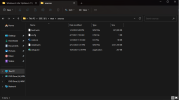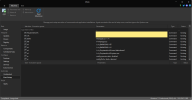Para fins informativos, se estiver usando a ferramenta Ventoy para inicializar o Win Setup ISO, você não pode usar o método descrito neste post para executar as tarefas diretamente da mídia de instalação, pois quando o Win Setup é reinicializado, o ISO não é mais montado, a etapa para encontrar o DRIVE no qual o ESD/WIM/SWM está presente não encontrará nada e, portanto, qualquer uma das etapas que dependem da variável %DRIVE% falhará.
O restante do método funciona bem e você pode simplesmente criar a pasta FilesU no mesmo nível da pasta Scripts em $OEM\$$\ , copiar todos os arquivos relevantes para lá e, em OOBE.cmd, substituir todas as ocorrências de '%DRIVE% \setup' com '%WINDIR%\setup'


